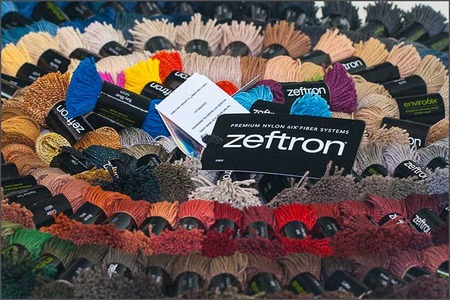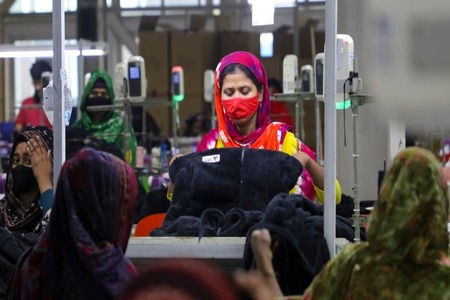
Taking local fashion to global stage
YarnsandFibers News Bureau 2019-06-27 23:25:00 –With their bright patterns, abstract geometric prints and tributes to the Global South, Stella Jean's designs have attracted the attention of Armani and Louboutin and been worn by the likes of Beyoncé, Rihanna and Zendaya. But the Haitian-Italian fashion designer's talents go beyond a knack for juxtaposing fabrics and lie within her ability to bridge cultural divides through her creations. Because Stella Jean's designs are much more than articles of clothing: there is a story woven into each piece.
“I didn’t begin my career in fashion to make beautiful dresses – I don’t even know how to draw,” she admits. “For me, fashion is very conceptual: I want to share ideas and tell stories through my work. To create a sort of marriage between my Italian background and international patterns in order to produce something that has a mixed origin, one with its own distinctive identity: something local that aspires to the global.”
Born in Rome to an Italian father and a Haitian mother, her upbringing was a difficult experience. “I was born in Italy in the 1980s, a time when the country was completely unprepared for multicultural families like mine – a family with a blonde father and a black mother,” she explains. “People constantly stopped in the streets to point at us.” In spite of the challenges, she credits her mixed background for her later success.
“I realized that what would set me apart in fashion was my story, and that I could channel my grief to create something unique and uplifting,” she says. Jean took sober, button-down shirts from her father’s closet and mixed them with bright, Creole fabrics.
“My inspiration was born from this idea of mixing a western aesthetic – striped shirts, sartorial lines, trench coats and blazers – with the chromatic colors of the Global South. I, myself, was the combination of these two cultures,” she explains. “Black and white may seem opposite but you can have an intelligent dialogue between the two.”
Jean’s signature collection “Wax and Stripes” helped her win Vogue Italy’s “Who Is On Next?” competition in 2011 when she was selected as a finalist by Franca Sozzani, Italian Vogue Editor in Chief, and Suzy Menkes, renowned fashion journalist.
It was only a matter of time before her distinctive aesthetic and personal philosophy captured the attention Giorgio Armani who showcased Stella Jean’s Spring/Summer 2014 collection at the Armani Theater in Milan, the first womenswear designer to present in the prestigious space. In extending his invitation, Armani underscored the importance of supporting a new generation of Italian designers. Jean also collaborated with Christian Louboutin on her Autumn/Winter 2014 shoe collection.
Soon thereafter, she was invited by the United Nations International Development Organization to take part in an ethical fashion program, an ambitious project that connects artisans in marginalized communities with global lifestyle brands. The program works to create employment opportunities for local makers while bolstering their skillsets and paving the path for long-term growth.
“Our mission is to safeguard tradition and work together to embolden local communities, in fact our motto is ‘Not Charity, Just Work’,” Jean explains. “Everyone deserves to be paid for their work, not given a handout or paid a percentage. We need to treat everyone equally otherwise we keep broadening the divide that separates us.” Since 2013, Jean has traveled to Haiti, Burkina Faso, Mali, Kenya and Peru to design a capsule collection that she presents at Milan Fashion Week each Fall.
For Jean, fashion is one of the best ways to transmit the history and identity of a country. “The places that I have visited have an important heritage that has been completely undervalued – and many traditions are dying out. I specifically look for local techniques and art forms that can be transformed into something wearable,” she explains.
“In Benin, for example, the people produce a beautiful, hand-loomed fabric. We worked with a woman who runs her own fabric factory and studied the details together: the colors, the weight, the dimensions. And then we sent the material to my artisans in Umbria to be cut and assembled,” she says. “It is like running a global factory. It is incredible that from a small village in Benin to our shop in Italy, we are creating a dialogue by using our hands rather than machines.”
In Haiti, Ms. Jean discovered a longstanding tradition of decorative metalwork and wondered if she adapt it into jewelry. Together with local artisans, she designed metal bangles that depict various aspects of Haiti’s culture, including its colorful tap-tap buses. “This is a visual that everyone recognizes, and it helps Haitians maintain their tradition in a new form. No one had thought of making something simple with metal that you could wear and now everyone in the village sells these bracelets. It is just one example of the power of creativity.”
And when it comes to presenting the new season on the runway, she invites the craftsmen and women to the show. “My ideal front row would always be made up of artisans, the people who have helped make the collection possible. I don’t like the idea that a fashion show has to be exclusive. My concept of fashion is very social, with open doors, and I want my designs to reach as many people as possible.”
Courtesy: Forbes
Market Intelligence
Ask for free sample Report

experience
Customer Base
dedicated team
Countries Served Worldwide









